
The Rottenrow is a street in the Townhead district of Glasgow, Scotland. One of the oldest streets in the city, it underwent heavy redevelopment in the 20th century and now forms part of the University of Strathclyde's John Anderson Campus. The street runs along the summit of a drumlin known historically as Balmanno Brae, although this name has long fallen from use.

Saint Mary's Hospital is a hospital in Manchester, England. It is part of Manchester University NHS Foundation Trust. Founded in 1790, St Mary's provides a range of inter-related services specifically for women and children. In 1986, St Mary's Sexual Assault Referral Centre was the first sexual assault referral centre (SARC) to open in the UK.

Manchester Royal Infirmary (MRI) is a large NHS teaching hospital in Chorlton-on-Medlock, Manchester, England. Founded by Charles White in 1752 as part of the voluntary hospital movement of the 18th century, it is now a major regional and national medical centre. It is the largest hospital within Manchester University NHS Foundation Trust, and based on its Oxford Road Campus in South Manchester where it shares a site with the Royal Manchester Children's Hospital, Manchester Royal Eye Hospital and Saint Mary's Hospital as well as several other educational and research facilities. The Hospital is also a key site for medical educational within Manchester, serving as a main teaching hospital for School of Medical Sciences, University of Manchester.
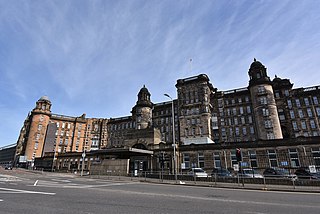
The Glasgow Royal Infirmary (GRI) is a large teaching hospital. With a capacity of around 1,000 beds, the hospital campus covers an area of around 8 hectares, and straddles the Townhead and Dennistoun districts on the north-eastern fringe of the city centre of Glasgow, Scotland. It is managed by NHS Greater Glasgow and Clyde. It was originally opened in 1794, with the present main building dating from 1914.

The School of Medical Sciences at the University of Manchester is one of the largest in the United Kingdom with around 6,000 undergraduates, 3,000 postgraduates and 2,000 staff. It is the third oldest medical school in England and the largest medical school in the United Kingdom. The Faculty is a member of the Manchester Academic Health Science Centre and has four affiliated teaching hospitals at Manchester Royal Infirmary, Wythenshawe Hospital, Salford Royal Hospital and the Royal Preston Hospital.
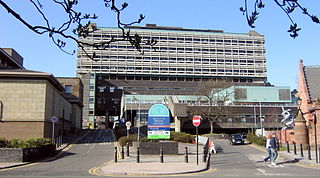
The Western Infirmary was a teaching hospital situated in the West End of Glasgow, Scotland, that was managed by NHS Greater Glasgow and Clyde. It was opened in 1874 and closed in 2015.

North Manchester General Hospital (NMGH) is a large NHS hospital in Crumpsall, North Manchester, England. It is operated by Manchester University NHS Foundation Trust. There is an accident and emergency unit, together with a maternity unit, high dependency unit and a mental health wing. A plan to rebuild the hospital was announced by Boris Johnson in the 2019 General Election campaign, and in November 2020 a £54 million funding bid for improvement works was made by the Trust, Manchester City Council, and Manchester Health and Care Commissioning.
Foresterhill is an area of Aberdeen, Scotland. It is the site of the city's main hospitals, as well as the medical school and medical science departments of the University of Aberdeen. It is the largest hospital complex in Europe.

The Royal Infirmary of Edinburgh (RIE), often known as the Edinburgh Royal Infirmary (ERI), was established in 1729 and is the oldest voluntary hospital in Scotland. The new buildings of 1879 were claimed to be the largest voluntary hospital in the United Kingdom, and later on, the Empire. The hospital moved to a new 900 bed site in 2003 in Little France. It is the site of clinical medicine teaching as well as a teaching hospital for the University of Edinburgh Medical School. In 1960, the first successful kidney transplant performed in the UK was at this hospital. In 1964, the world's first coronary care unit was established at the hospital. It is the only site for liver, pancreas and pancreatic islet cell transplantation and one of two sites for kidney transplantation in Scotland. In 2012, the Emergency Department had 113,000 patient attendances, the highest number in Scotland. It is managed by NHS Lothian.

The West Glasgow Ambulatory Care Hospital is a healthcare facility in Yorkhill, Glasgow. The new ambulatory care facility was created in December 2015 to house the remaining outpatient services and the minor injury unit previously housed at the Western Infirmary. It is managed by NHS Greater Glasgow and Clyde.
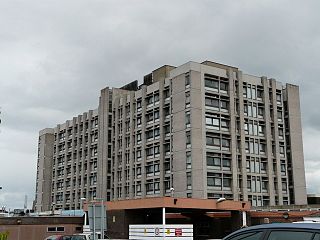
Doncaster Royal Infirmary is a district general hospital of 800 beds, located in Doncaster, South Yorkshire, England. It is managed by Doncaster and Bassetlaw Teaching Hospitals NHS Foundation Trust.

The Edinburgh Royal Maternity and Simpson Memorial Pavilion was a maternity hospital in Lauriston, Edinburgh, Scotland. Its services have now been incorporated into the Royal Infirmary of Edinburgh at Little France.
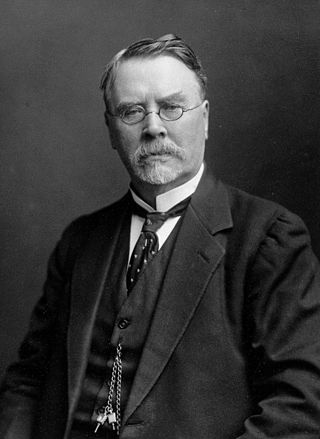
Murdoch Cameron was Regius Professor of Obstetrics and Gynaecology at the University of Glasgow from 1894 to 1926. He was a pioneer of the Caesarean section under modern antiseptic conditions, becoming world famous after the success of his first such operation in 1888, at what was then the Glasgow Lying-in Hospital and Dispensary, now the Princess Royal Maternity Hospital, an institution he was deeply involved with. He was honorary President of the first international Congress on Obstetrics and Gynaecology, in 1892. His son Samuel James Cameron followed in his footsteps, becoming Reguis Professor of Midwifery at Glasgow in the 1930s.

The Royal Alexandra Hospital (RAH) is the main hospital in Paisley serving a large catchment area stretching all the way to Oban and Argyll. The hospital is managed by NHS Greater Glasgow and Clyde.
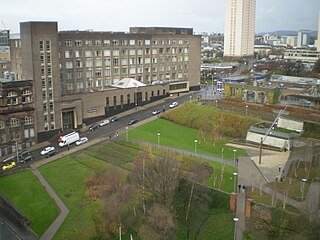
The John Anderson Campus, the main campus of The University of Strathclyde, is located in Glasgow, Scotland. The campus is self-contained in its own area which straddles the Townhead and Merchant City districts on the north eastern side of the city centre, while being only minutes from the M8 Motorway, George Square and is located midway between Queen Street Railway Station and High Street station on the North Clyde Line.

The Royal Lancaster Infirmary (RLI) is a hospital in the city of Lancaster, England. It lies to the south of the city centre, between the A6 road and the Lancaster Canal. It is managed by the University Hospitals of Morecambe Bay NHS Foundation Trust.
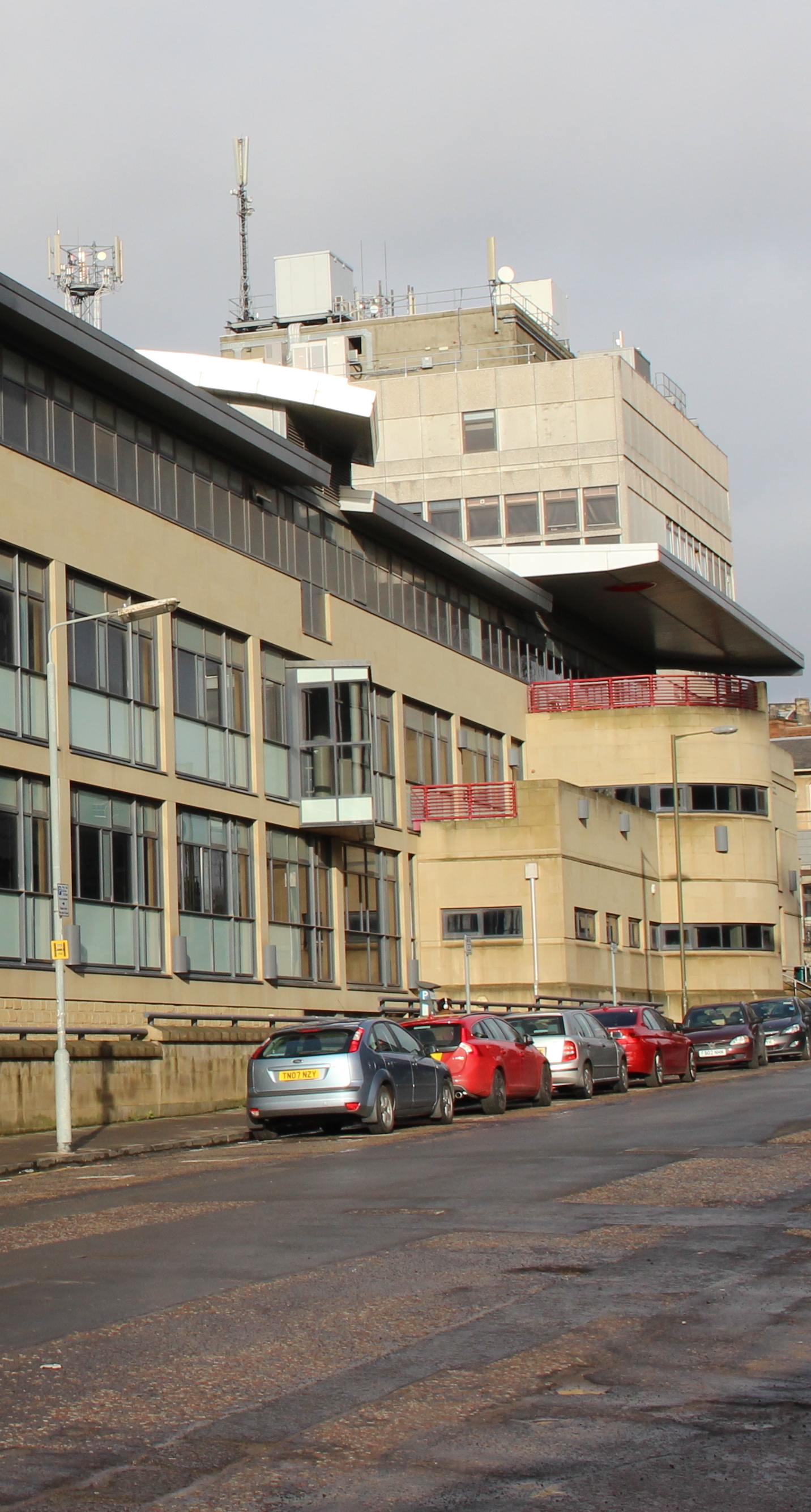
The Princess Alexandra Eye Pavilion is a specialist eye treatment centre in Edinburgh, Scotland. It is managed by NHS Lothian. It provides ophthalmic care for Edinburgh and the Lothians, and tertiary care for South East Scotland.

The Queen Elizabeth University Hospital (QEUH) is a 1,677-bed acute hospital located in Govan, in the south-west of Glasgow, Scotland. The hospital is built on the site of the former Southern General Hospital and opened at the end of April 2015. The hospital comprises a 1,109-bed adult hospital, a 256-bed children's hospital and two major Emergency Departments; one for adults and one for children. There is also an Immediate Assessment Unit for local GPs and out-of-hours services, to send patients directly, without having to be processed through the Emergency Department.
Prof James George Wilson MD FRSE FFPSG FRCSE (1830–1881) was a 19th-century Scottish surgeon and obstetrician. He was the first Superintendent and Physician of the Glasgow Maternity Hospital.
Stirling Health and Care Village is a health and care facility at Livilands Gate in Stirling, Scotland. It is managed by NHS Forth Valley as well as Stirling and Clackmannanshire's HSCP. It was formerly known as Stirling Community Hospital.



















